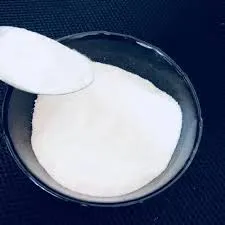
Dec . 07, 2024 09:21 Back to list
hydroxyethyl cellulose viscosity
Understanding Hydroxyethyl Cellulose Viscosity Importance and Applications
Hydroxyethyl cellulose (HEC) is a non-ionic, water-soluble polymer derived from cellulose through an etherification process. It is widely used in various industries due to its unique properties, one of the most significant being its viscosity. Viscosity is a measure of a fluid's resistance to flow, and in the case of HEC, this characteristic plays a crucial role in determining its performance in applications such as cosmetics, pharmaceuticals, and food products.
The Nature of Viscosity in Hydroxyethyl Cellulose
The viscosity of hydroxyethyl cellulose is affected by various factors, including concentration, molecular weight, temperature, and the presence of other solutes. As the concentration of HEC increases, the viscosity also tends to rise, creating a thicker solution. This is primarily due to the entanglement and interaction between the polymer chains in the solution. Furthermore, different grades of HEC, characterized by differing molecular weights, lead to variations in viscosity. Lower molecular weight HEC typically yields lower viscosity solutions, while high molecular weight HEC can result in highly viscous mixtures.
Temperature also significantly impacts the viscosity of HEC solutions. Generally, as temperature increases, viscosity decreases due to reduced interactions among polymer chains. This property is beneficial in various formulations where temperature changes are expected, allowing for better control of the product's consistency during processing and application.
Importance of Viscosity in Applications
1. Cosmetics and Personal Care Products HEC is commonly used in lotions, creams, shampoos, and gels. Its viscosity helps stabilize emulsions, providing a desirable texture and consistency. For instance, in hair care products, a higher viscosity ensures that the product adheres to the hair, allowing for effective coverage and nourishment. Moreover, the thickening properties of HEC contribute to the sensory experience, affecting how the product feels during application.
hydroxyethyl cellulose viscosity

2. Pharmaceuticals In the pharmaceutical industry, HEC is employed in various formulations, including oral suspensions and topical creams. Its viscosity plays a vital role in ensuring proper drug delivery and release. Highly viscous formulations can slow down the release of active ingredients, thus prolonging their effects. This is particularly important in sustained-release medication, where controlled release can enhance therapeutic efficacy.
3. Food Industry Hydroxyethyl cellulose serves as a food additive, where it acts as a thickener, stabilizer, and emulsifier. In products like sauces and dressings, HEC enhances texture and mouthfeel while preventing separation. The ability to form stable and viscous solutions also allows for improved product consistency and shelf life, making it a valuable ingredient in processed foods.
4. Construction HEC is utilized in construction materials such as mortars, plasters, and tile adhesives. Its thickening properties improve workability, reduce water loss, and enhance bonding strength. In construction applications, viscosity is crucial as it affects the spreadability and adhesion of materials, contributing to the overall durability of the construction.
Measuring Viscosity
The viscosity of hydroxyethyl cellulose is typically measured using a viscometer, which assesses the fluid’s flow behavior under specific conditions. Understanding how to measure and manipulate viscosity is essential for formulators across various sectors. By adjusting the concentration of HEC or altering the molecular weight, formulators can achieve the desired viscosity for their specific applications, optimizing product performance.
Conclusion
Hydroxyethyl cellulose is a versatile polymer with essential viscosity properties that greatly influence its functionality across numerous industries. Understanding the factors that affect HEC viscosity is crucial for formulators aiming to develop effective products. Whether in cosmetic formulations, pharmaceuticals, food products, or construction materials, the ability to manipulate viscosity allows for innovative applications and improved product consistency. As industries continue to evolve and demands shift, the role of hydroxyethyl cellulose and its unique viscosity characteristics will undoubtedly expand, indicating a promising future for this valuable ingredient.
-
Versatile Hpmc Uses in Different Industries
NewsJun.19,2025
-
Redispersible Powder's Role in Enhancing Durability of Construction Products
NewsJun.19,2025
-
Hydroxyethyl Cellulose Applications Driving Green Industrial Processes
NewsJun.19,2025
-
Exploring Different Redispersible Polymer Powder
NewsJun.19,2025
-
Choosing the Right Mortar Bonding Agent
NewsJun.19,2025
-
Applications and Significance of China Hpmc in Modern Industries
NewsJun.19,2025







